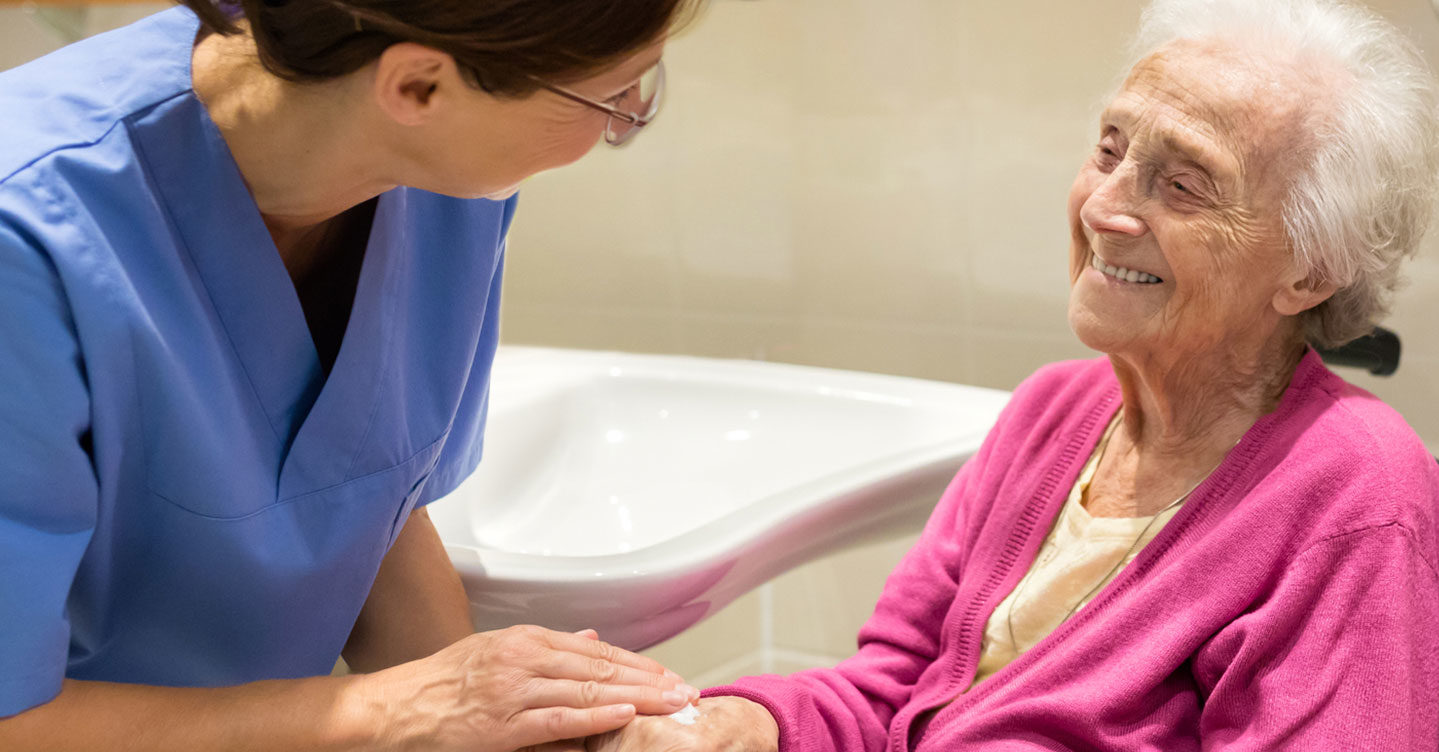Improving Operational Performance
A call for a systems approach to
skin health

By Jeanine Maguire, MPT, CWS
As both a certified wound specialist and physical therapist, I promote the collaboration of the interprofessional team for skin and wound management success at Genesis HealthCare. A true interdisciplinary team consists of primary caregivers, providers, residents and family members, nurses, therapists, dietitians and others.
Before coming to Genesis 17 years ago, I worked in acute care and outpatient settings, beginning to focus my career on skin and wound management. My first position at a Genesis center was as director of rehabilitation, and I was fortunate enough to partner with the director of nursing. We did rounds together and recognized the difference a team approach to care could make.
Today I support a systems approach to skin and wound management to approximately 440 Genesis facilities. I lead our Product Review Committee and Skin Integrity Practice Council, which includes certified wound nurses, physicians, nurse practitioners, divisional nurses from around the country, dieticians, clinical risk managers and physical therapists. Depending on the project, we sometimes collaborate with pharmacy, business, property management, budget management and operations, as well as vendor partners.
My thinking on skin has evolved over my career. Like many clinicians, I believe that skin is a window into the health of the entire human body, giving insight into the overall state of homeostasis. If a resident or patient has skin breakdown, sometimes he or she may have other issues, such as medical, physical or psychosocial, or changes in medication, and the skin breakdown or wound may actually be an unavoidable symptom of an even bigger issue.
All care facilities, no matter where they fall in the healthcare continuum, can benefit from taking a systems approach to skin health. Download Healthy Skin magazine to see how three other healthcare systems—NorthShore University HealthSystem, the VA, and Amedisys Home Health Care and Hospice—are making skin health a priority.
But consider this: If multiple residents or patients experience skin breakdown at one center in a short period of time, it could be—and I stress could be—a result of system issues. The situation needs to be evaluated holistically and ecologically, considering how the environment, product and a facility’s process touches or affects skin integrity.
Some products are obvious—bed and chair surfaces, mobility interventions and wheelchairs—but nutritional supplements and products that aid or restrict mobility, such as positioning devices, should also be considered. The facility’s processes should be evaluated, including risk assessment skills, skin integrity checks, mobility programs and knowledge of a team approach to prevention. This type of root cause analysis is part of providing quality care and process improvement.
I have learned that to obtain the best outcomes, we need an interdisciplinary systems approach to skin health. The facility staff needs to look at processes with fresh eyes and break free of silos in how we think about skin breakdown. At Genesis, we promote a philosophy called ‘Thinking Right,’ which is a great example of this approach.



